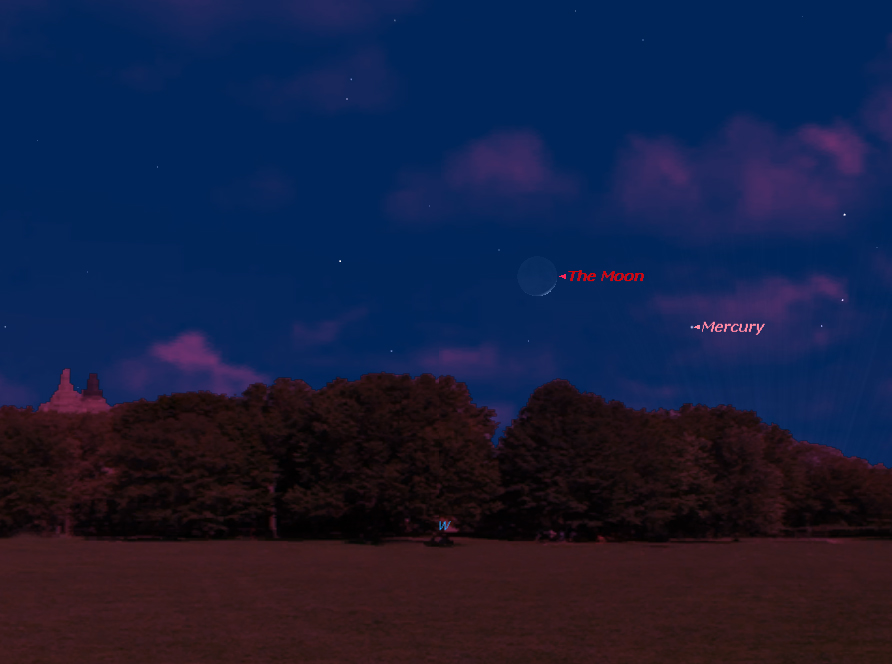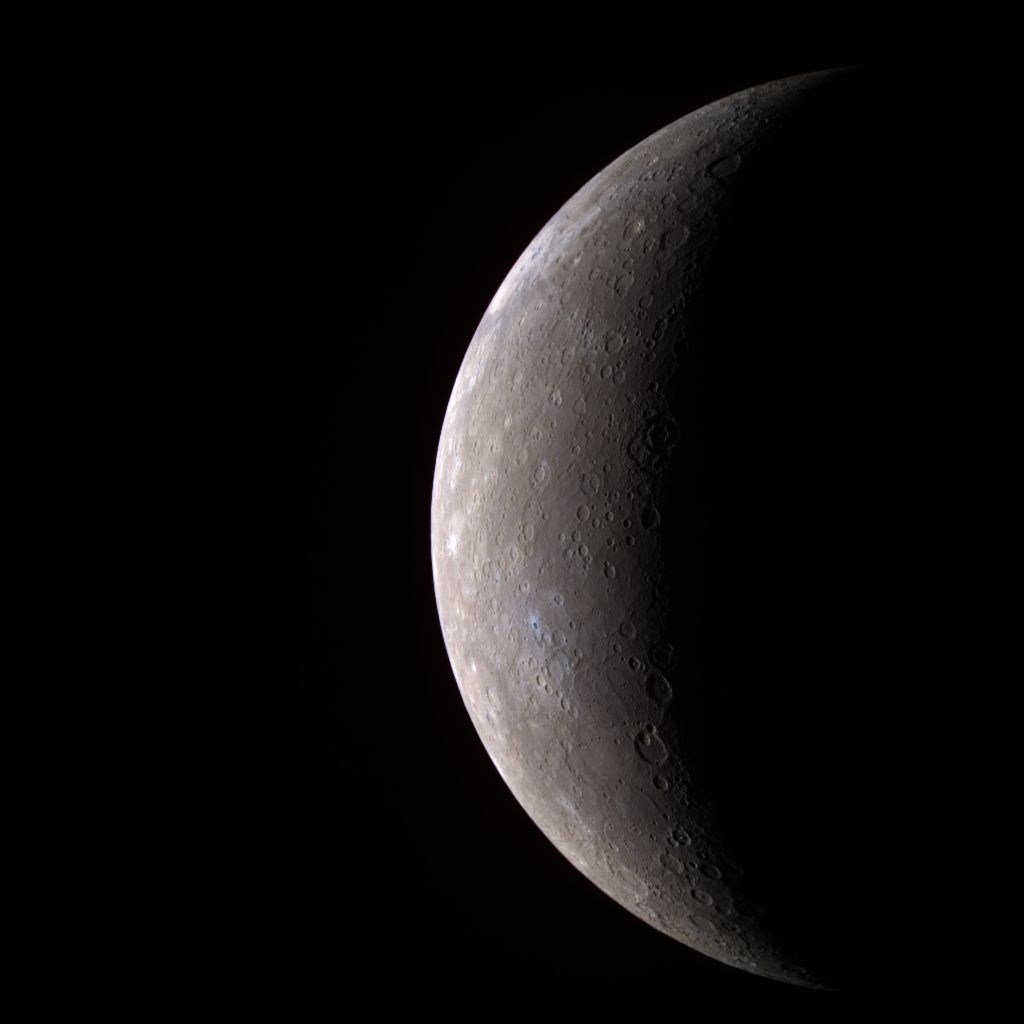
Sometimes, I get the impression that some guides in stargazing and astronomy unintentionally plant a sort of "defeatist attitude" in prospective observers who attempt to seek out the planet Mercury.
Some books, for example, point out that Mercury always stays close to the sun, thus making the planet difficult to spot. In fact, Mercury has acquired the branding of "the elusive planet." One handbook uses the analogy that Mercury "stays close to the sun like a child clinging to its mother's apron strings." Other books point out that legendary Polish astronomer Nicolaus Copernicus — the man who proved that all of the planets revolve around the sun and not around the Earth — never saw Mercury in all of his life.
"Well," a novice skywatcher might think, "if a famous astronomer like Copernicus couldn't find it, what chance do I have?" [The Best Night Sky of April 2016 (Sky Maps)]
But don't fret, for Mercury can be found easily enough if you simply know where to look. Right now, in fact, this tiny, rocky world can be glimpsed very low in the western sky about 30 or 40 minutes after sunset. In a telescope, Mercury appears as a gibbous disc and is shining at a brilliant magnitude of minus 1.0. (Astronomers use a scale on which lower numbers denote brighter objects.) Among the stars, only Sirius shines more brightly.
And on Friday evening (April 8), you'll have a window to make a positive identification of the so-called elusive planet. About 40 or 45 minutes after sunset, look low toward the western horizon, and you will see the slender sliver of a crescent moon, about 36 hours past new phase. Then, look off to the right, slightly lower than the crescent moon, and you will see a bright "star" shining through the evening twilight.
Congratulations. You've just spotted Mercury!
The distance between the moon and the planet will be roughly 7 degrees. Your clenched fist held at arm's length measures roughly 10 degrees, so these objects should appear separated by approximately three-quarters of a fist. Once you've located Mercury, you should have no problem finding it on subsequent evenings, even after the moon has moved away.
Get the Space.com Newsletter
Breaking space news, the latest updates on rocket launches, skywatching events and more!
On April 18, Mercury will arrive at its greatest elongation from the sun, getting about 20 degrees east of its host star. The planet will have dimmed considerably since its rendezvous with the moon, shining at magnitude 0.2 (or about half as bright).
However, Mercury will be easier to observe at that point, because it will be much higher in the twilight sky, and will set later. The planet will then stand 10 degrees above the west-northwest horizon in mid-twilight (about 45 minutes after sunset). This will be the planet's best showing in 2016 for people at mid-northern latitudes. For several evenings around this date, Mercury will not sink below the horizon until about an hour and 45 minutes after the sun sets.

Then, for the rest of the month, Mercury will go lower, and will dim much more rapidly, as it passes through its crescent phases. By April 28, it will be at magnitude 2.3 and probably will be much too dim to detect in the bright sky, even with binoculars. Inferior conjunction (with Mercury between Earth and the sun) occurs on May 9. Also on that day, Mercury will cross directly in front of the sun (called a "transit") for much of the Earth, except for a slice of easternmost Asia, Indonesia, Australia and New Zealand. We will have much more to say about this rare and interesting event in the upcoming weeks, so stay tuned here at Space.com.
Editor's note: If you safely capture a view of the moon, Mercury or any other celestial sight and you'd like to share it with Space.com and our news partners for a story or gallery, send images and comments to managing editor Tariq Malik at spacephotos@space.com.
Joe Rao serves as an instructor and guest lecturer at New York's Hayden Planetarium. He writes about astronomy for Natural History magazine, the Farmer's Almanac and other publications, and he is also an on-camera meteorologist for News 12 Westchester, New York. Follow us @Spacedotcom, Facebook or Google+. Originally published on Space.com.
Join our Space Forums to keep talking space on the latest missions, night sky and more! And if you have a news tip, correction or comment, let us know at: community@space.com.

Joe Rao is Space.com's skywatching columnist, as well as a veteran meteorologist and eclipse chaser who also serves as an instructor and guest lecturer at New York's Hayden Planetarium. He writes about astronomy for Natural History magazine, Sky & Telescope and other publications. Joe is an 8-time Emmy-nominated meteorologist who served the Putnam Valley region of New York for over 21 years. You can find him on Twitter and YouTube tracking lunar and solar eclipses, meteor showers and more. To find out Joe's latest project, visit him on Twitter.










